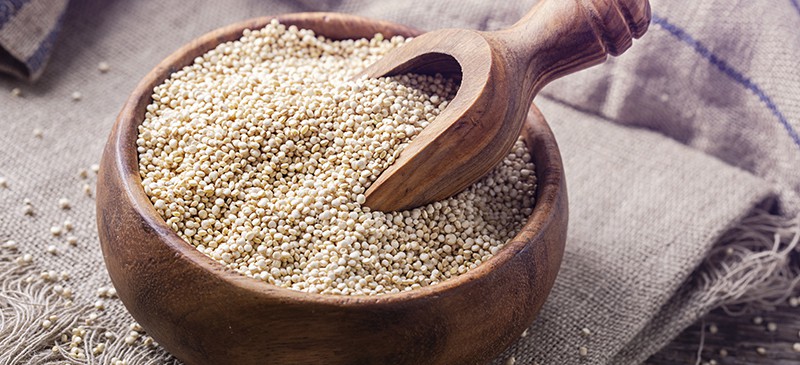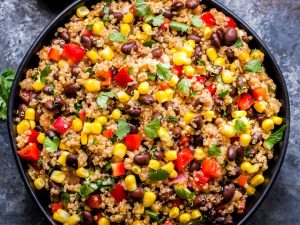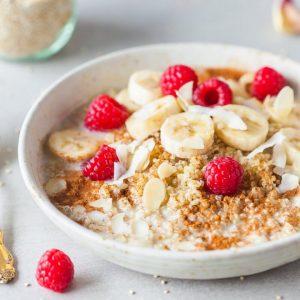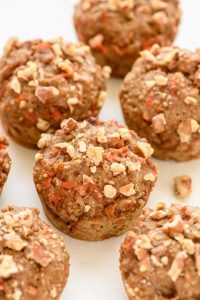Quinoa, is it really superfood?
Superfood is a non-medical term, usually refers to foods that have health promoting properties. According to American Heart Association (AHA), there is just no specific category when it comes to superfood. It mostly is plant-based food but sometimes it can be fish and dairy that are nutritionally dense as well. Superfoods usually contain unusually high content of antioxidant to ward of cancer, high in fiber which does not spike blood glucose thus have the properties to prevent diabetes and digestive problem. It is also high with healthy fat to prevent heart disease and contain phytochemicals that is responsible for food deep colors. Example of superfoods are green tea, acai berries, salmon and quinoa (1,2).

What is quinoa?
Quinoa or also known as pseudo-cereals is world most popular superfood, even recognized by Harvard School of Public Health. Quinoa is gluten free, high in protein and one the few plant foods that contain complete all nine essential amino acids (3).
It is not only rare to have all the nine essential amino acids in a food, but it is as well is important and easy for us! To make it easy to understand, for amino acid there are two kind of amino acids, essential and non-essential. Essential amino acid is the amino acids that cannot be synthesized by human body, it must be gathered from diet, while the non-essential amino acids is the amino acids that can be synthesized by human body itself. Amino acid is important for the growth, repairing of body tissue, breaking down the food and many others. Thus, when quinoa has its all, this superfood really is NUTRITIOUS (4,5)!

Quinoa also is high in fiber, magnesium, B vitamins, iron, potassium, calcium, phosphorus, E vitamin and various antioxidants (4,5).
Is Quinoa really superfood?
Yes! Even according to Harvard School of Public Health! Quinoa is technically a seed, but due to its nutritious properties it is considered as whole grain. One cup of cooked quinoa provides about 8g of protein and 5g of fiber. Thus, it really promotes satiety and is suitable for breakfast, lunch, and dinner.
When it comes to superfood, there are various claim with regards to this. Some critical claim said that, a superfood might be a superfood but the process itself might make the superfood not as nutritious as it would be, which is why, it is really important to understand the cooking process and food process itself.
As for quinoa, it has different level of maturity of seeds even in the same plant, thus it must be hand-picked undergo the process of removing saponin – a bitter chemical compound coating the exterior part of quinoa that act as natural pesticides. After this process, quinoa is then healthy and safe to be eaten!
But due to its high nutrient content, some people said that, it not really palatable, especially with the Asian or Malaysian palate! Thus, there are few cooking or serving suggestion with regards to quinoa if you are to consume this superfood!
Replace your carbohydrate with quinoa
Since quinoa is better than the average rice, pasta, and many other carbs, thus it is advisable to replace it with quinoa. As an example, you may replace quinoa in sushi, pasta salad and you can even prepare it as a breakfast cereal by simply cook it with milk or water and diced in some fruits or pop in some cinnamon and a table spoon of nuts!
But, since Quinoa is prominently in cultivated in country such as Peru, Chile, Bolivia and Ecuador, thus it is really difficult to get the quinoa in the country like Malaysia, so what can one do with regard to this ?
It is to.. choose food product that has quinoa as its main ingredients!
You may drink it as it is and still get the benefits from quinoa if its in powder form, or you can even add this product in your salad, as gravy or in less sugar cookies, muffin, bownies or even pancake!
Example below on how quinoa can be served as!

Quinoa as breakfast cereal

Quinoa with salad

Quinoa muffin
References
-
Christopher Wanjek (2019). What are Superfood? com. https://www.livescience.com/34693-superfoods.html (Accessed on July 6, 2020).
-
Mellisa Conrad Stoppler. Medical Definition of Superfood. https://www.medicinenet.com/script/main/art.asp?articlekey=125459 (Accessed on July 6, 2020).
-
Harvard T.H. Chan School of Public Health. https://www.hsph.harvard.edu/nutritionsource/food-features/quinoa/ (Accessed on July 6, 2020).
-
Kriss Gunnars (2018). 11 Proven Benefits of Quinoa. Healthline. https://www.healthline.com/nutrition/11-proven-benefits-of-quinoa (Accessed on July 6, 2020).
-
Medline Plus. Amino Acids. https://medlineplus.gov/ency/article/002222.htm (Accessed on July 6, 2020).




